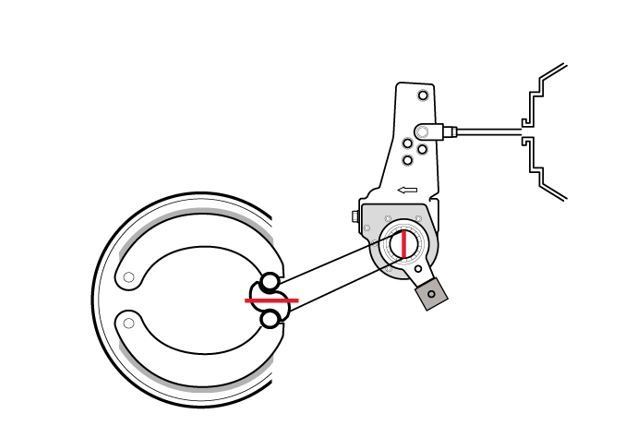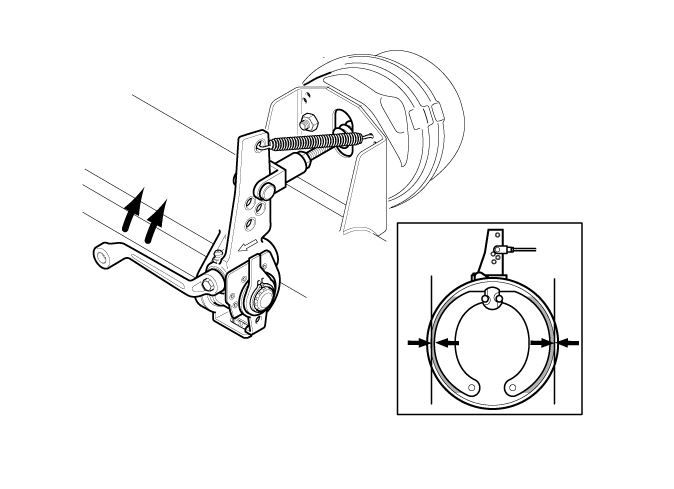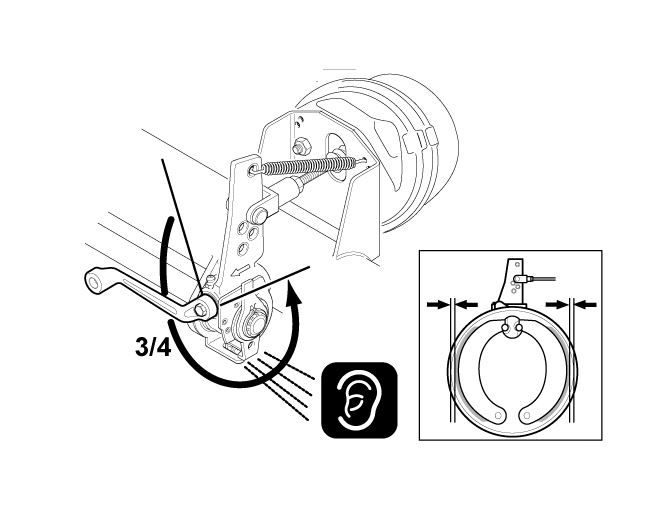Learning with ALON AUTOMOTIVE
How to adjust the braking system

We all know how important it is to have our brakes properly adjusted, but do we know how to do this?
Below are the steps to achieving a perfect brake adjustment and avoiding unnecessary wear and tear of parts, and even frights on the road.
1. Start with the vehicle on flat or level ground and the air tank up to the operating pressure.
2. Enable the mechanical brake on the drive shaft and/or block at least one front wheel and one rear wheel with chocks to ensure that the vehicle is stationary.
3. Release the handbrake/"Maxi" to the "Driving" position if it is installed.
4. Adjust the brake levers one at a time. Turn the adjustment screw in the direction that moves the lever tip towards the air chamber until it stops. (Note: if the brakes have been running, this operation should not involve too many turns). At this point, if the brake shoes are visible, they should be flush against the drums.

5. The next step is to undo or turn the lever adjustment screw 1/8 - 1/4 anticlockwise with a suitable wrench, aiming to move the lever away from the air chamber. It should move approximately 1 / 4-3 / 8", which indicates that the shoes are not close enough to drag the drum, but are close enough for there to be a margin of safety of the movement of the air chamber for the brake applications.

On some lever models, you need to push down an outer "lock sleeve" to access the adjusting screw. If this is the case, make sure that the sleeve returns to its place after adjusting.
6. Continue with the other three wheels, repeating steps 4 and 5 for each one. Handbrakes must be in the "Brake Off" or "Driving" position before the brake can be adjusted. This will adjust the service brake and handbrake. Do not release the spring-loaded handbrake ("Maxi") until two wheels have been blocked.
7. The brakes will now be adjusted. Pull up the handbrake/"Maxi" before removing the wheel chocks.
8. Release the mechanical brake from the drive shaft, if applicable, start the vehicle and try to drive with the brake at full force. This is a quick check to make sure that the rear brakes have not been placed the other way around. When moving, press the brakes to make sure they are working.
Possible mistakes
A very common mistake is to accidentally configure the brakes the other way around. You can place the levers in the fully released position, then make them go back half a turn towards the adjustment, which of course means that the brake is not loose, but neither is it tight, as in these cases there is no brake.
The best case scenario is for all of them to be placed the other way around, because if one, two or three are configured correctly, the lack of braking power of three, two or one will not be felt until you really need the brakes, such as on a long downhill slope. In this case, the overloaded brakes that were adjusted correctly will soon become unusable due to wear and tear.
However, if all the brakes are incorrectly configured, it is easy to spot this in step 8 above. A slack brake will also use up more air in each application, and higher demand can lower the pressure more quickly than the compressor can maintain it.
Always bear in mind that the brake is tightened when the end of the lever moves towards the air chamber, and it loosens when it moves away. Therefore, after the first step, check the end of the lever and make sure it moves towards the air chamber.
Other things to check
There are other things to check besides the brake clearance. Air consumption must also be controlled. At the first sign of the brakes using more air, check for leaks by turning off the engine and listening to the vehicle, with the brakes off and on (an assistant is required), and also check the compressor.
The brakes may be overtightened
After driving for ten to fifteen minutes after a brake adjustment, it is a good idea to stop, pull up the handbrake and check the brake drums on each wheel. An overtightened brake will have warmed up by this time, which can cause excessive wear and tear on the brake. Of course, this applies to situations in which you have not been using the brakes a lot or at all.




